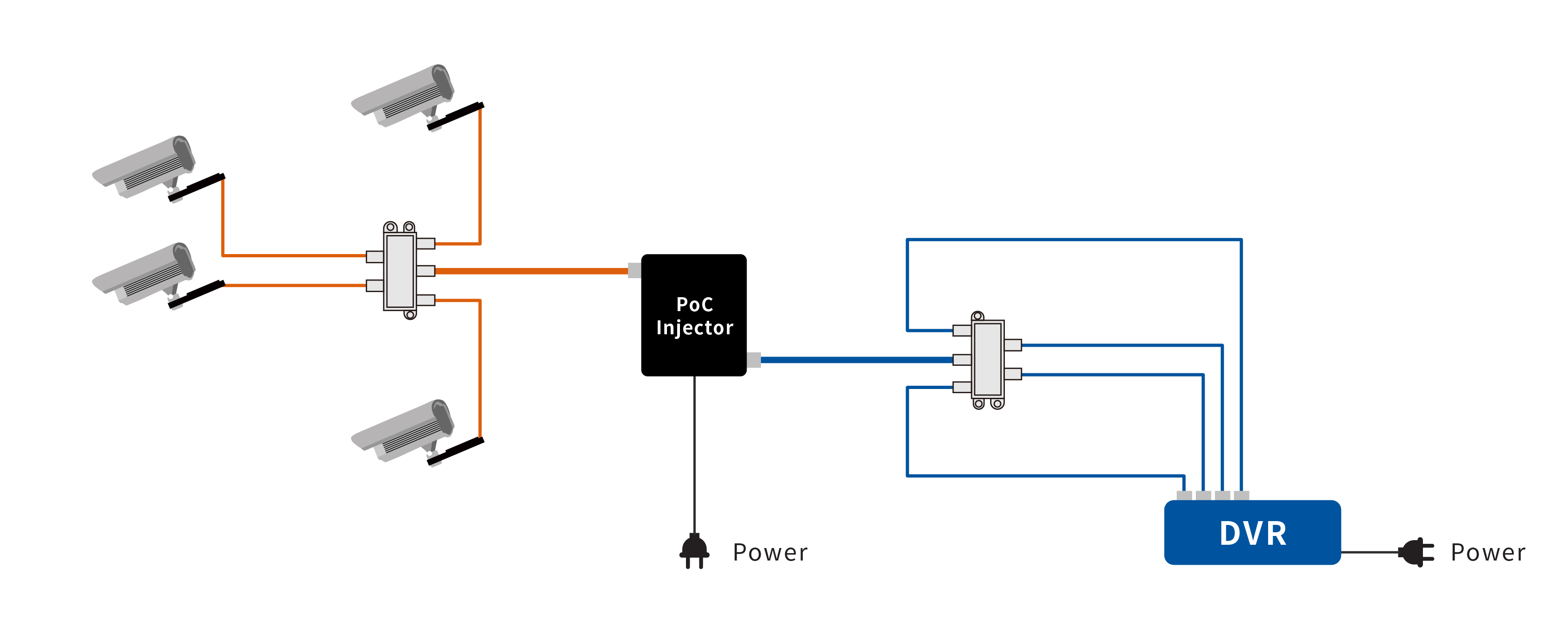PoC Coaxial Cable Power Supply Structure
In PoC (Power over Coaxial) technology, a single coaxial cable serves a dual purpose:
1. Transmitting video data
2. Delivering power to the camera

1. Transmitting video data
2. Delivering power to the camera

Enhancing Integration and Stability
PoC technology combines power and video transmission into a single-channel, point-to-point architecture that supports
long-distance transmission of up to 800 to 1,000 meters without the need for signal repeaters.。
With just one coaxial cable, users can integrate and mix signals from multiple DTV or ccHDtv cameras.
Each channel transmits independently, avoiding cross-channel interference and ensuring stable system
operation— ideal for large-scale surveillance deployments.
long-distance transmission of up to 800 to 1,000 meters without the need for signal repeaters.。
With just one coaxial cable, users can integrate and mix signals from multiple DTV or ccHDtv cameras.
Each channel transmits independently, avoiding cross-channel interference and ensuring stable system
operation— ideal for large-scale surveillance deployments.
PoC systems are also highly tolerant of existing cabling infrastructure.
Even legacy coaxial cables can be reused without major rewiring,
simplifying installation and reducing overall deployment costs.
Even legacy coaxial cables can be reused without major rewiring,
simplifying installation and reducing overall deployment costs.
Furthermore, PoC supports high-definition video transmission without relying on IP networks,
meaning the transmission is not affected by network congestion or bandwidth limitations.
This results in low-latency video delivery,
making it especially suitable for applications requiring real-time visual monitoring.
meaning the transmission is not affected by network congestion or bandwidth limitations.
This results in low-latency video delivery,
making it especially suitable for applications requiring real-time visual monitoring.
Surveillance Applications of PoC Technology
Large-Scale Environments
- Ideal for wide-area, multi-point deployments, such as residential complexes, campuses, and hospitals.
- Suitable for industrial and logistics parks where long-distance video transmission is required.
Real-Time Synchronization Requirements
- Designed for applications requiring real-time video, such as license plate recognition and access control systems.
Integration and Upgrading of Existing Systems
- Supports integration of legacy analog equipment or transition scenarios such as site renovations or system upgrades.